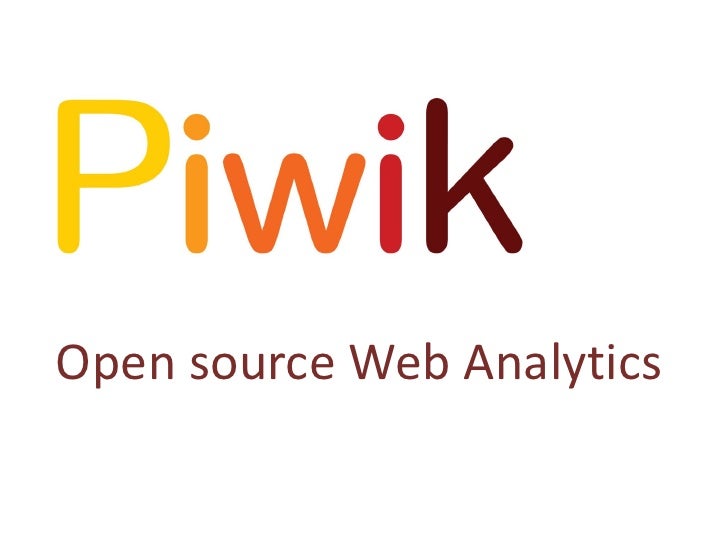How Social Media Reviews and Perceived Value Affects the Purchase Intention of Beauty Products
DOI:
https://doi.org/10.24843/MATRIK:JMBK.2023.v17.i02.p08Keywords:
COVID-19; green economy; tourism village.Abstract
This research was conducted with the aim of analyzing the green economy transition in tourism, especially tourist villages, whether it is able to provide inspiration or actually prevent an increase in people's income in conditions of the COVID-19 shock. The research was carried out in tourist villages in West Java and Lampung Provinces. This study found thatthe transition of a tourist village with the concept of green economy has a strong influence in increasing the income of rural tourism communities in conditions of the COVID-19 shock, this is due to the fact that the green economy concept encourages the utilization of natural resources and environmental preservation, this will ensure a sustainable attraction for tourists which in turn can increase revenue.
Downloads
References
Aksoy, R., & Basaran, U. (2017). The Effect Of Perceived Value On Behavioural Intentions. Pressacademia, 4(1), 1–16. Https://Doi.Org/10.17261/Pressacademia.2017.375
Annur, C. M. (2022). Ini Media Sosial Dengan Pengguna Terbanyak Pada Oktober 2022. Katadata.Co.Id. Https://Databoks.Katadata.Co.Id/Datapublish/2022/11/23/Ini-Media- Sosial-Dengan-Pengguna-Terbanyak-Pada-Oktober-2022
Arifin, R., Yanuar, T., & Syah, R. (2023). How E-Wom Influence Purchase Intention Mediated By Trust And Brand Awareness : Case On Generation X In Indonesia. 9(2), 411–421.
BPOM. (2022). Industri Kecantikan Tanah Air Punya Prospek Bagus. Kompas.Id. Https://Www.Kompas.Id/Baca/Ekonomi/2022/10/25/Bpom-Menilai-Industri-Kosmetik- Akan-Tetap-Berkembang
BPS. (2022). Industri Kecantikan Tahan Krisis, Laris Manis Meski Pandemi. CNBC Indonesia. Https://Www.Cnbcindonesia.Com/Lifestyle/20221104104902-33-385138/Industri- Kecantikan-Tahan-Krisis-Laris-Manis-Meski-Pandemi#:~:Text=Berdasarkan Data Badan Pusat Statistik,Perusahaan Hingga 20%2C6%25.
Chan, A., Handoko, E. E., & Auliana, L. (2021). Pengaruh Electronic Word Of Mouth Terhadap Minat Beli Pada Media Sosial Twitter Di Jawa Barat Dan Dki Jakarta. JURNAL AKUNTANSI, EKONOMI Dan MANAJEMEN BISNIS, 9(1), 36–46.
Https://Doi.Org/10.30871/Jaemb.V9i1.2837
Changa, H. J., Eckmanb, M., & Yanb, R. N. (2011). Application Of The Stimulus-Organism- Response Model To The Retail Environment: The Role Of Hedonic Motivation In Impulse Buying Behavior. International Review Of Retail, Distribution And Consumer Research, 21(3), 233–249. Https://Doi.Org/10.1080/09593969.2011.578798
Cheung, C. M. K., Lee, M. K. O., & Rabjohn, N. (2008). The Impact Of Electronic Word‐Of‐ Mouth: The Adoption Of Online Opinions In Online Customer Communities. Internet Research.
Chong, A. Y. L., Khong, K. W., Ma, T., Mccabe, S., & Wang, Y. (2018). Analyzing Key Influences Of Tourists’ Acceptance Of Online Reviews In Travel Decisions. Internet Research, 28(3), 564–586. https://doi.org/10.1108/IntR-05-2017-0212
Daowd, A., Hasan, R., Eldabi, T., Rafi-ul-Shan, P. M., Cao, D., & Kasemsarn, N. (2020). Factors affecting eWOM credibility, information adoption and purchase intention on Generation Y: a case from Thailand. Journal of Enterprise Information Management, 34(3), 838–859. https://doi.org/10.1108/JEIM-04-2019-0118
Erkan, I. (2016). The Influence of Electronic Word of Mouth in Social Media on Consumers’ Purchase Intentions. Computers in Human Behavior, 61, 47–55.
Fang, Y. H. (2014). Beyond the credibility of electronic word of mouth: Exploring eWOM adoption on social networking sites from affective and curiosity perspectives. In International Journal of Electronic Commerce (Vol. 18, Issue 3). https://doi.org/10.2753/JEC1086-4415180303
Filieri, R., Alguezaui, S., & McLeay, F. (2015). Why do travelers trust TripAdvisor?
Antecedents of trust towards consumer-generated media and its influence on recommendation adoption and word of mouth. Tourism Management, 51, 174–185. https://doi.org/10.1016/j.tourman.2015.05.007
Ghozali. (2018). Aplikasi analisis multivariate dengan program IBM SPSS 25 edisi ke-9 (9th ed.). Universitas Diponegoro. http://slims.umn.ac.id//lib/phpthumb/phpThumb.php?src=../../images/docs/Aplikasi_Ana lisis_Multivariete_Dengan_Program_IBM_SPSS_23 E.jpg.jpg
Gunawan, D. D., & Huarng, K. H. (2015). Viral effects of social network and media on consumers’ purchase intention. Journal of Business Research, 68(11), 2237–2241. https://doi.org/10.1016/j.jbusres.2015.06.004
Haider, M. J., Changchun, G., Akram, T., & Hussain, S. T. (2018). Exploring Gender Effects in Intention to Islamic Mobile Banking Adoption: an empirical study. Arab Economic and Business Journal, 13(1), 25–38. https://doi.org/10.1016/j.aebj.2018.01.002
Hajli, N. (2018). Ethical Environment in the Online Communities by Information Credibility: A Social Media Perspective. Journal of Business Ethics, 149(4), 799–810. https://doi.org/10.1007/s10551-016-3036-7
Han, L., Wang, S., Zhao, D., & Li, J. (2017). The intention to adopt electric vehicles: Driven by functional and non-functional values. Transportation Research Part A: Policy and Practice, 103, 185–197. https://doi.org/10.1016/j.tra.2017.05.033
Handoko, N. T., & Melinda, T. (2021). Effect of Electronic Word of Mouth on Purchase Intention Through Brand Image As Media in Tokopedia. International Journal of Economics, Business and Accounting Research (IJEBAR), 5(4), 83–93. http://jurnal.kwikkiangie.ac.id/index.php/JM/article/view/743
Hsiao, M. H. (2021). Influence of interpersonal competence on behavioral intention in social commerce through customer-perceived value. Journal of Marketing Analytics, 9(1), 44–55. https://doi.org/10.1057/s41270-020-00093-5
Insight, G. (2020). Media Sosial Jadi Referensi Konsumen Membeli Produk Selama Pandemi Artikel ini telah tayang di Katadata.co.id dengan judul “Media Sosial Jadi Referensi Konsumen Membeli Produk Selama Pandemi” , https://katadata.co.id/ekarina/brand/5faa6013a3980/media-sosi. Katadata.Co.Id. https://katadata.co.id/ekarina/brand/5faa6013a3980/media-sosial-jadi-referensi- konsumen-membeli-produk-selama-pandemi
Jiang, L., Zhou, W., Ren, Z., & Yang, Z. (2022). Make the apps stand out: discoverability and perceived value are vital for adoption. Journal of Research in Interactive Marketing, 16(4),
494–513. https://doi.org/10.1108/JRIM-03-2021-0076
Khoi, N. H., Tuu, H. H., & Olsen, S. O. (2018). The role of perceived values in explaining Vietnamese consumers’ attitude and intention to adopt mobile commerce. Asia Pacific Journal of Marketing and Logistics, 30(4), 1112–1134. https://doi.org/10.1108/APJML- 11-2017-0301
Leander von Kameke. (2023). Facebook: monthly active users in APAC 2014-2022.
Statista.Com. https://www.statista.com/statistics/652133/facebook-asia-pacific-mau-by- quarter/
Lee, S., Sung, B., Phau, I., & Lim, A. (2019). Communicating authenticity in packaging of Korean cosmetics. Journal of Retailing and Consumer Services, 48(October 2018), 202–214. https://doi.org/10.1016/j.jretconser.2019.02.011
Lis, B. (2013). In eWOM We Trust. Wirtschaftsinformatik, 55(3), 121–134. https://doi.org/10.1007/s11576-013-0360-8
Mariasih, A. A., & Setiyaningrum, A. (2021). Peran eWOM Quality, eWOM Quantity, dan eWOM Credibility dalam Membentuk Corporate Image dan Mendorong Purchase Intention: Studi Empiris pada Jasa Pendidikan. Jurnal Manajemen Dan Bisnis Sriwijaya, 19(1), 1412–4521. http://ejournal.unsri.ac.id/index.php/jmbs
Muhammad Alghiffari, I., & Listyorini, S. (2022). the Effect of Influencer and Consumer Review on Purchase Intention With Brand Image As Intervening Variable. Jurnal Pemikiran Dan Penelitian Administrasi Bisnis Dan Kewirausahaan, 7(3), 261–275. https://doi.org/10.24198/adbispreneur.v7i3.38910,
Munadie, N. A., & Widodo, T. (2019). (Bisnis dan Manajemen). 11(April), 131–154. Nofal, R., Bayram, P., Emeagwali, O. L., & Al-Mu’ani, L. (2022). The Effect of eWOM
Source on Purchase Intention: The Moderation Role of Weak-Tie eWOM. Sustainability (Switzerland), 14(16). https://doi.org/10.3390/su14169959
Petty, R. E., & Cacioppo, J. T. (1986). The elaboration likelihood model of persuasion. In Communication and persuasion (pp. 1–24). Springer.
Prasetio, A., & Purnamawati, E. D. (2023). The Role of Brand Ambassador and Electronic Word-of-Mouth in Predicting Purchase Intention Peran Brand Ambassador dan Electronic Word-of-Mouth dalam. 14(85), 1–21.
Shah, A. M., Yan, X., Shah, S. A. A., & Ali, M. (2021). Customers’ perceived value and dining choice through mobile apps in Indonesia. Asia Pacific Journal of Marketing and Logistics, 33(1), 1–28. https://doi.org/10.1108/APJML-03-2019-0167
Subagio, D. P. W., & Rachmawati, D. L. (2020). Pengaruh Endorser terhadap Purchase Intention dengan Perceived Value dan Perceived Usefulness sebagai Variabel Mediasi (Studi Pada Viewer Food Vlogger of YouTube Channel). Jurnal Manajemen Dan Kewirausahaan, 8(1), 1–11. https://doi.org/10.26905/jmdk.v8i1.3997
Suphasomboon, T., & Vassanadumrongdee, S. (2022). Toward sustainable consumption of green cosmetics and personal care products: The role of perceived value and ethical concern. Sustainable Production and Consumption, 33, 230–243. https://doi.org/10.1016/j.spc.2022.07.004
Sussman, S. W., & Siegal, W. S. (2003). Informational influence in organizations: An integrated approach to knowledge adoption. Information Systems Research, 14(1), 47–
Aksoy, R., & Basaran, U. (2017). The Effect Of Perceived Value On Behavioural Intentions.
Pressacademia, 4(1), 1–16. Https://Doi.Org/10.17261/Pressacademia.2017.375
Annur, C. M. (2022). Ini Media Sosial Dengan Pengguna Terbanyak Pada Oktober 2022. Katadata.Co.Id. Https://Databoks.Katadata.Co.Id/Datapublish/2022/11/23/Ini-Media- Sosial-Dengan-Pengguna-Terbanyak-Pada-Oktober-2022
Arifin, R., Yanuar, T., & Syah, R. (2023). How E-Wom Influence Purchase Intention Mediated By Trust And Brand Awareness : Case On Generation X In Indonesia. 9(2), 411–421.
BPOM. (2022). Industri Kecantikan Tanah Air Punya Prospek Bagus. Kompas.Id. Https://Www.Kompas.Id/Baca/Ekonomi/2022/10/25/Bpom-Menilai-Industri-Kosmetik- Akan-Tetap-Berkembang
BPS. (2022). Industri Kecantikan Tahan Krisis, Laris Manis Meski Pandemi. CNBC Indonesia.
Https://Www.Cnbcindonesia.Com/Lifestyle/20221104104902-33-385138/Industri- Kecantikan-Tahan-Krisis-Laris-Manis-Meski-Pandemi#:~:Text=Berdasarkan Data Badan Pusat Statistik,Perusahaan Hingga 20%2C6%25.
Chan, A., Handoko, E. E., & Auliana, L. (2021). Pengaruh Electronic Word Of Mouth Terhadap Minat Beli Pada Media Sosial Twitter Di Jawa Barat Dan Dki Jakarta. JURNAL AKUNTANSI, EKONOMI Dan MANAJEMEN BISNIS, 9(1), 36–46.
Https://Doi.Org/10.30871/Jaemb.V9i1.2837
Changa, H. J., Eckmanb, M., & Yanb, R. N. (2011). Application Of The Stimulus-Organism- Response Model To The Retail Environment: The Role Of Hedonic Motivation In Impulse Buying Behavior. International Review Of Retail, Distribution And Consumer Research, 21(3), 233–249. Https://Doi.Org/10.1080/09593969.2011.578798
Cheung, C. M. K., Lee, M. K. O., & Rabjohn, N. (2008). The Impact Of Electronic Word‐Of‐ Mouth: The Adoption Of Online Opinions In Online Customer Communities. Internet Research.
Chong, A. Y. L., Khong, K. W., Ma, T., Mccabe, S., & Wang, Y. (2018). Analyzing Key Influences Of Tourists’ Acceptance Of Online Reviews In Travel Decisions. Internet Research, 28(3), 564–586. https://doi.org/10.1108/IntR-05-2017-0212
Daowd, A., Hasan, R., Eldabi, T., Rafi-ul-Shan, P. M., Cao, D., & Kasemsarn, N. (2020). Factors affecting eWOM credibility, information adoption and purchase intention on Generation Y: a case from Thailand. Journal of Enterprise Information Management, 34(3), 838–859. https://doi.org/10.1108/JEIM-04-2019-0118
Erkan, I. (2016). The Influence of Electronic Word of Mouth in Social Media on Consumers’ Purchase Intentions. Computers in Human Behavior, 61, 47–55.
Fang, Y. H. (2014). Beyond the credibility of electronic word of mouth: Exploring eWOM adoption on social networking sites from affective and curiosity perspectives. In International Journal of Electronic Commerce (Vol. 18, Issue 3). https://doi.org/10.2753/JEC1086-4415180303
Filieri, R., Alguezaui, S., & McLeay, F. (2015). Why do travelers trust TripAdvisor?
Antecedents of trust towards consumer-generated media and its influence on recommendation adoption and word of mouth. Tourism Management, 51, 174–185. https://doi.org/10.1016/j.tourman.2015.05.007
Ghozali. (2018). Aplikasi analisis multivariate dengan program IBM SPSS 25 edisi ke-9 (9th ed.). Universitas Diponegoro. http://slims.umn.ac.id//lib/phpthumb/phpThumb.php?src=../../images/docs/Aplikasi_Ana lisis_Multivariete_Dengan_Program_IBM_SPSS_23 E.jpg.jpg
Gunawan, D. D., & Huarng, K. H. (2015). Viral effects of social network and media on consumers’ purchase intention. Journal of Business Research, 68(11), 2237–2241. https://doi.org/10.1016/j.jbusres.2015.06.004
Haider, M. J., Changchun, G., Akram, T., & Hussain, S. T. (2018). Exploring Gender Effects in Intention to Islamic Mobile Banking Adoption: an empirical study. Arab Economic and Business Journal, 13(1), 25–38. https://doi.org/10.1016/j.aebj.2018.01.002
Hajli, N. (2018). Ethical Environment in the Online Communities by Information Credibility: A Social Media Perspective. Journal of Business Ethics, 149(4), 799–810. https://doi.org/10.1007/s10551-016-3036-7
Han, L., Wang, S., Zhao, D., & Li, J. (2017). The intention to adopt electric vehicles: Driven by functional and non-functional values. Transportation Research Part A: Policy and Practice, 103, 185–197. https://doi.org/10.1016/j.tra.2017.05.033
Handoko, N. T., & Melinda, T. (2021). Effect of Electronic Word of Mouth on Purchase Intention Through Brand Image As Media in Tokopedia. International Journal of Economics, Business and Accounting Research (IJEBAR), 5(4), 83–93. http://jurnal.kwikkiangie.ac.id/index.php/JM/article/view/743
Hsiao, M. H. (2021). Influence of interpersonal competence on behavioral intention in social commerce through customer-perceived value. Journal of Marketing Analytics, 9(1), 44–55. https://doi.org/10.1057/s41270-020-00093-5
Insight, G. (2020). Media Sosial Jadi Referensi Konsumen Membeli Produk Selama Pandemi Artikel ini telah tayang di Katadata.co.id dengan judul “Media Sosial Jadi Referensi Konsumen Membeli Produk Selama Pandemi” , https://katadata.co.id/ekarina/brand/5faa6013a3980/media-sosi. Katadata.Co.Id. https://katadata.co.id/ekarina/brand/5faa6013a3980/media-sosial-jadi-referensi- konsumen-membeli-produk-selama-pandemi
Jiang, L., Zhou, W., Ren, Z., & Yang, Z. (2022). Make the apps stand out: discoverability and perceived value are vital for adoption. Journal of Research in Interactive Marketing, 16(4), 494–513. https://doi.org/10.1108/JRIM-03-2021-0076
Khoi, N. H., Tuu, H. H., & Olsen, S. O. (2018). The role of perceived values in explaining Vietnamese consumers’ attitude and intention to adopt mobile commerce. Asia Pacific Journal of Marketing and Logistics, 30(4), 1112–1134. https://doi.org/10.1108/APJML- 11-2017-0301
Leander von Kameke. (2023). Facebook: monthly active users in APAC 2014-2022.
Statista.Com. https://www.statista.com/statistics/652133/facebook-asia-pacific-mau-by- quarter/
Lee, S., Sung, B., Phau, I., & Lim, A. (2019). Communicating authenticity in packaging of Korean cosmetics. Journal of Retailing and Consumer Services, 48(October 2018), 202–214. https://doi.org/10.1016/j.jretconser.2019.02.011
Lis, B. (2013). In eWOM We Trust. Wirtschaftsinformatik, 55(3), 121–134. https://doi.org/10.1007/s11576-013-0360-8
Mariasih, A. A., & Setiyaningrum, A. (2021). Peran eWOM Quality, eWOM Quantity, dan eWOM Credibility dalam Membentuk Corporate Image dan Mendorong Purchase Intention: Studi Empiris pada Jasa Pendidikan. Jurnal Manajemen Dan Bisnis Sriwijaya, 19(1), 1412–4521. http://ejournal.unsri.ac.id/index.php/jmbs
Muhammad Alghiffari, I., & Listyorini, S. (2022). the Effect of Influencer and Consumer Review on Purchase Intention With Brand Image As Intervening Variable. Jurnal Pemikiran Dan Penelitian Administrasi Bisnis Dan Kewirausahaan, 7(3), 261–275. https://doi.org/10.24198/adbispreneur.v7i3.38910,
Munadie, N. A., & Widodo, T. (2019). (Bisnis dan Manajemen). 11(April), 131–154.
Nofal, R., Bayram, P., Emeagwali, O. L., & Al-Mu’ani, L. (2022). The Effect of eWOM Source on Purchase Intention: The Moderation Role of Weak-Tie eWOM. Sustainability (Switzerland), 14(16). https://doi.org/10.3390/su14169959
Petty, R. E., & Cacioppo, J. T. (1986). The elaboration likelihood model of persuasion. In Communication and persuasion (pp. 1–24). Springer.
Prasetio, A., & Purnamawati, E. D. (2023). The Role of Brand Ambassador and Electronic Word-of-Mouth in Predicting Purchase Intention Peran Brand Ambassador dan Electronic Word-of-Mouth dalam. 14(85), 1–21.
Shah, A. M., Yan, X., Shah, S. A. A., & Ali, M. (2021). Customers’ perceived value and dining choice through mobile apps in Indonesia. Asia Pacific Journal of Marketing and Logistics, 33(1), 1–28. https://doi.org/10.1108/APJML-03-2019-0167
Subagio, D. P. W., & Rachmawati, D. L. (2020). Pengaruh Endorser terhadap Purchase Intention dengan Perceived Value dan Perceived Usefulness sebagai Variabel Mediasi (Studi Pada Viewer Food Vlogger of YouTube Channel). Jurnal Manajemen Dan Kewirausahaan, 8(1), 1–11. https://doi.org/10.26905/jmdk.v8i1.3997
Suphasomboon, T., & Vassanadumrongdee, S. (2022). Toward sustainable consumption of green cosmetics and personal care products: The role of perceived value and ethical concern. Sustainable Production and Consumption, 33, 230–243. https://doi.org/10.1016/j.spc.2022.07.004
Sussman, S. W., & Siegal, W. S. (2003). Informational influence in organizations: An integrated approach to knowledge adoption. Information Systems Research, 14(1), 47– 65.
Sweeney, J. C., & Soutar, G. N. (2001). Consumer perceived value: The development of a multiple item scale. Journal of Retailing, 77(2), 203–220.
Tien, D. H., Amaya Rivas, A. A., & Liao, Y. K. (2019). Examining the influence of customer- to-customer electronic word-of-mouth on purchase intention in social networking sites. Asia Pacific Management Review, 24(3), 238–249. https://doi.org/10.1016/j.apmrv.2018.06.003
Vidyanata, D. (2022). Understanding the Effect of Social Media Marketing on Purchase Intention : a Value-based Adoption Model. JDM (Jurnal Dinamika Manajemen), 13(2), 305–321. https://journal.unnes.ac.id/nju/index.php/jdm/article/view/37878
Wathen, C. N., & Burkell, J. (2002). Believe it or not: Factors influencing credibility on the Web. Journal of the American Society for Information Science and Technology, 53(2), 134–144.
Widodo, T., & Krisma Maylina, N. L. P. (2022). The mediating role of perceived value and social media word-of-mouth in the relationship between perceived quality and purchase intention. Jurnal Manajemen Dan Pemasaran Jasa, 15(1), 49–68. https://doi.org/10.25105/jmpj.v15i1.9468
Wijanto, S. H. (2008). Structural equation modeling dengan Lisrel 8.8 : konsep dan tutorial / Setyo Hari Wijanto. Graha Ilmu. https://opac.perpusnas.go.id/DetailOpac.aspx?id=690979
Downloads
Published
Issue
Section
License
 This work is licensed under a Creative Commons Attribution-ShareAlike 4.0 International License.
This work is licensed under a Creative Commons Attribution-ShareAlike 4.0 International License.













